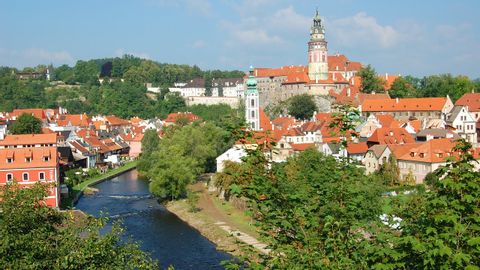
Subtitles & vocabulary
The Czech Republic Beyond Prague
00
Jane posted on 2015/09/27Save
Video vocabulary
town
US /taʊn/
・
UK /taʊn/
- Countable Noun
- Small city
- Part of city with shops and entertainments
A1TOEIC
More cheese
US /tʃiz/
・
UK /tʃi:z/
- Noun (Countable/Uncountable)
- Yellowish solid food made from aged milk
- Intransitive Verb
- To smile broadly for a photograph
A2
More river
US /ˈrɪvɚ/
・
UK /ˈrɪvə(r)/
- Noun (Countable/Uncountable)
- Flowing water that runs from mountains to the sea
A1
More Use Energy
Unlock All Vocabulary
Unlock pronunciation, explanations, and filters
